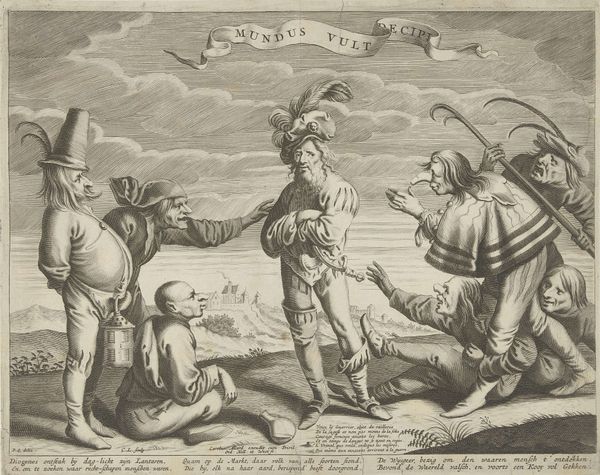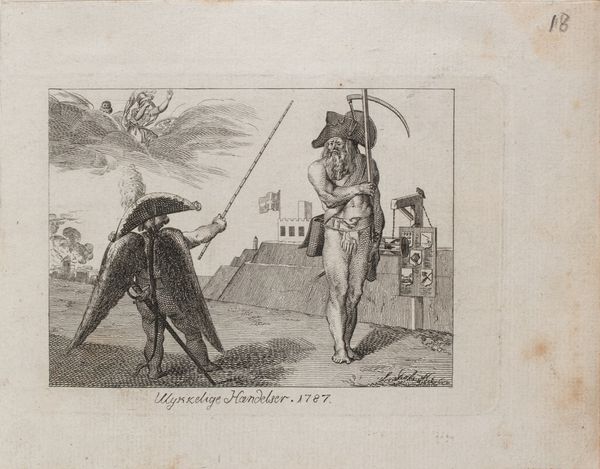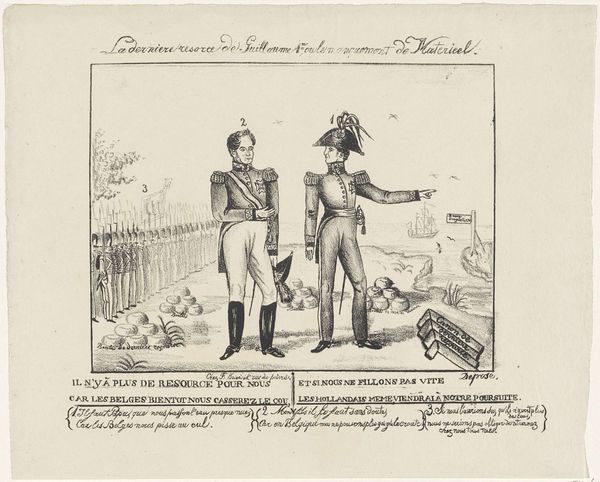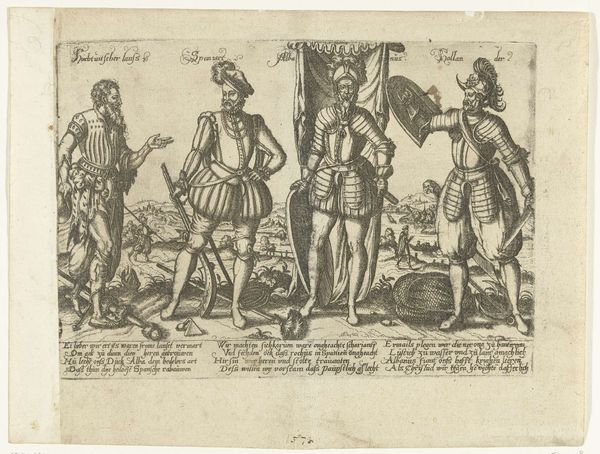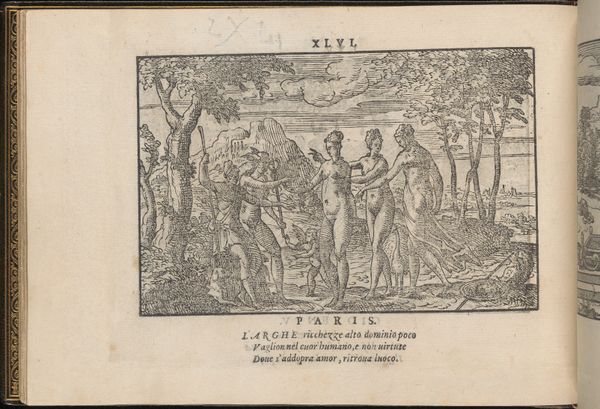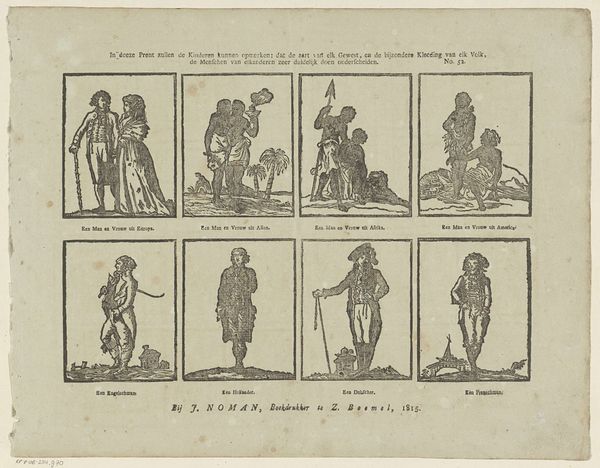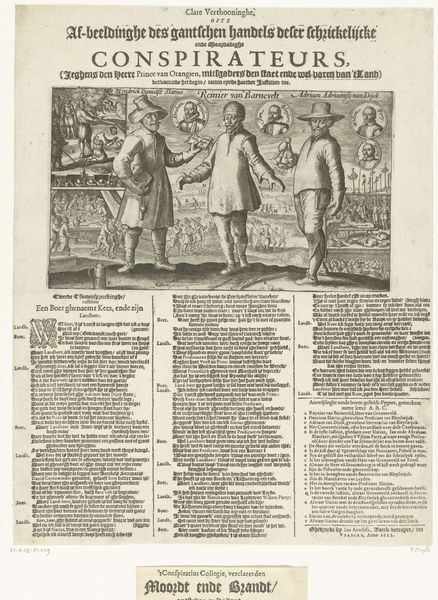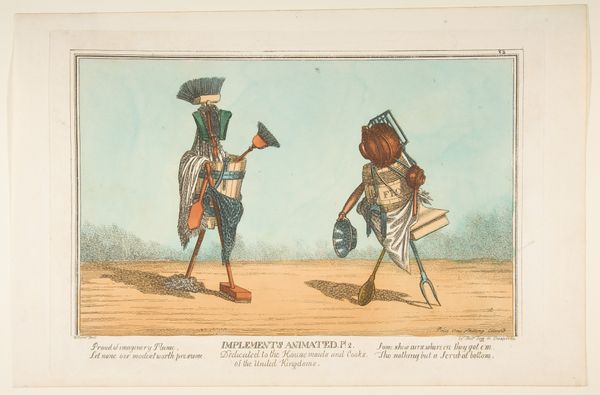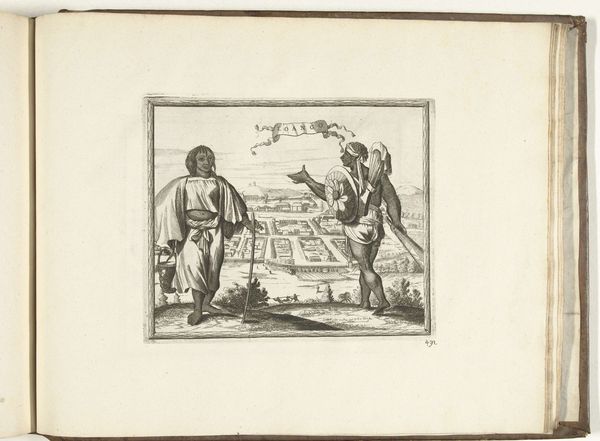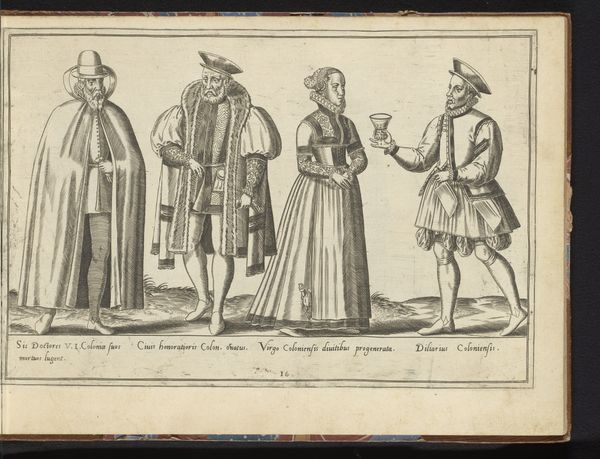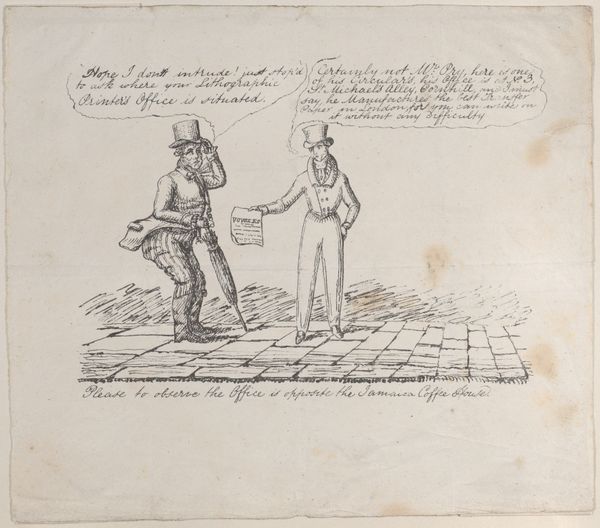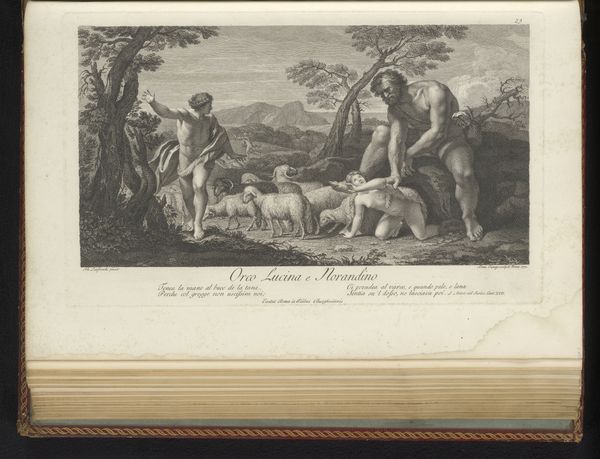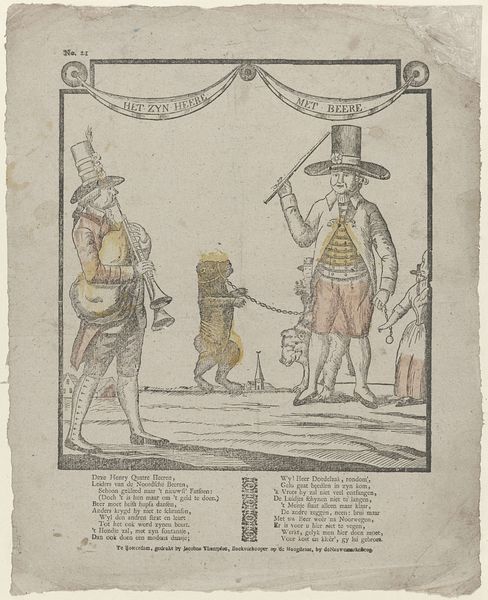
print, engraving
#
allegory
#
narrative-art
# print
#
caricature
#
old engraving style
#
figuration
#
social-realism
#
history-painting
#
engraving
Dimensions: height 223 mm, width 275 mm
Copyright: Rijks Museum: Open Domain
Curator: This lithograph, crafted by Gottfried Engelmann in 1833, resides here at the Rijksmuseum and is called "Spotprent op de afschaffing van de slavernij in Engeland." Editor: Wow, that's a mouthful. My immediate reaction? It's unsettlingly clean. For a piece about slavery, the stark lines feel almost too composed, you know? Like a carefully staged argument rather than a cry from the heart. Curator: The clean lines speak, in part, to the conventions of satirical prints during this period, and that tension is incredibly generative for thinking about abolitionist discourse then, as well as now. The inscription "Dédié aux Anglomanes," tells us this work engages with criticisms directed toward English society’s contradictions. Editor: Ah, so the almost cartoonish portrayal of John Bull, standing between an enslaved person and a chained woman, that's all intentional satire. I suppose, now, the lack of raw emotion makes a lot of sense when looked at that way. But why dedicate it to “Anglomanes”? Isn't it pointing out some hypocrisies of abolition? Curator: Exactly! While England officially abolished slavery in its colonies in 1833, this print suggests a critical perspective on British society itself, potentially highlighting other forms of oppression or exploitation existing within it. Think about the situation of women at the time, restricted and often treated as property within marriage. Editor: Okay, I see what you're saying. It’s less about celebrating abolition and more about questioning what “freedom” really means, who gets to enjoy it, and at what cost. The engraving depicts gendered and raced inequalities as part of a broader system of power, suggesting that they were not mutually exclusive. And the reference to an auction in the lower text—powerful stuff. Curator: Indeed. The artwork prompts a reflection on the complex dynamics of power, privilege, and social justice, resonating deeply with contemporary dialogues surrounding intersectionality and historical accountability. Editor: Definitely given me a lot to think about regarding who art is made for, who it speaks for, and if this kind of satire really challenges people or just comforts them.
Comments
No comments
Be the first to comment and join the conversation on the ultimate creative platform.
